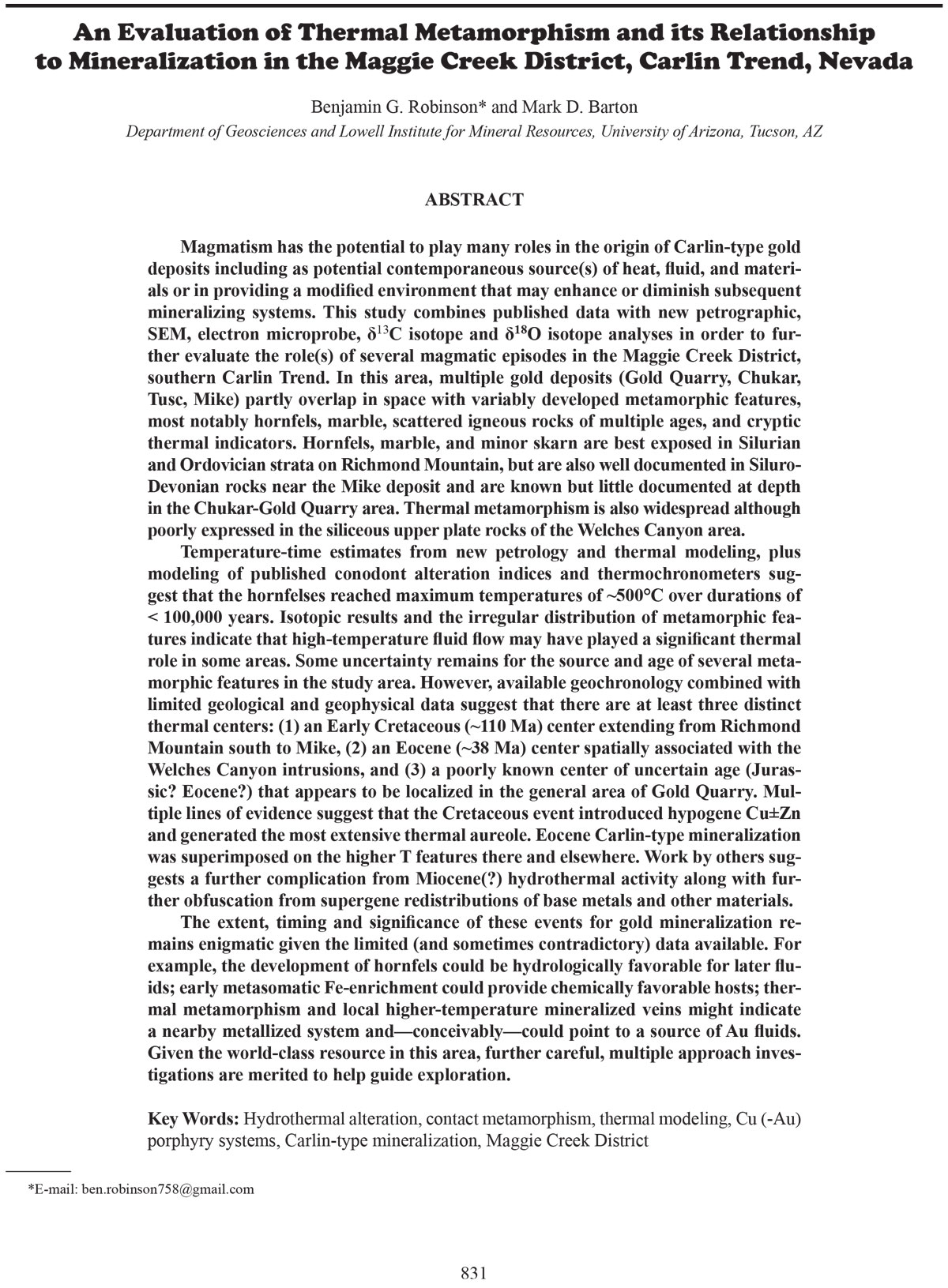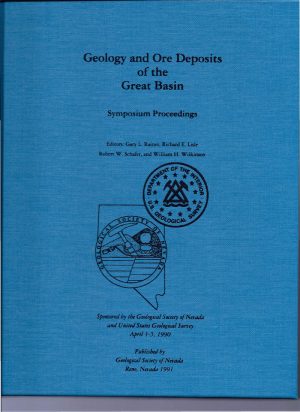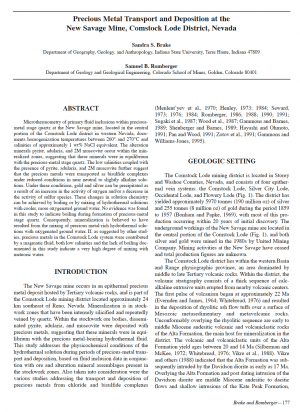Description
Magmatism has the potential to play many roles in the origin of Carlin-type gold
deposits including as potential contemporaneous source(s) of heat, fluid, and materials or in providing a modified environment that may enhance or diminish subsequent
mineralizing systems. This study combines published data with new petrographic,
SEM, electron microprobe, δ13C isotope and δ18O isotope analyses in order to further evaluate the role(s) of several magmatic episodes in the Maggie Creek District,
southern Carlin Trend. In this area, multiple gold deposits (Gold Quarry, Chukar,
Tusc, Mike) partly overlap in space with variably developed metamorphic features,
most notably hornfels, marble, scattered igneous rocks of multiple ages, and cryptic
thermal indicators. Hornfels, marble, and minor skarn are best exposed in Silurian
and Ordovician strata on Richmond Mountain, but are also well documented in SiluroDevonian rocks near the Mike deposit and are known but little documented at depth
in the Chukar-Gold Quarry area. Thermal metamorphism is also widespread although
poorly expressed in the siliceous upper plate rocks of the Welches Canyon area.
Temperature-time estimates from new petrology and thermal modeling, plus
modeling of published conodont alteration indices and thermochronometers suggest that the hornfelses reached maximum temperatures of ~500°C over durations of
< 100,000 years. Isotopic results and the irregular distribution of metamorphic features indicate that high-temperature fluid flow may have played a significant thermal
role in some areas. Some uncertainty remains for the source and age of several metamorphic features in the study area. However, available geochronology combined with
limited geological and geophysical data suggest that there are at least three distinct
thermal centers: (1) an Early Cretaceous (~110 Ma) center extending from Richmond
Mountain south to Mike, (2) an Eocene (~38 Ma) center spatially associated with the
Welches Canyon intrusions, and (3) a poorly known center of uncertain age (Jurassic? Eocene?) that appears to be localized in the general area of Gold Quarry. Multiple lines of evidence suggest that the Cretaceous event introduced hypogene Cu±Zn
and generated the most extensive thermal aureole. Eocene Carlin-type mineralization
was superimposed on the higher T features there and elsewhere. Work by others suggests a further complication from Miocene(?) hydrothermal activity along with further obfuscation from supergene redistributions of base metals and other materials.
The extent, timing and significance of these events for gold mineralization remains enigmatic given the limited (and sometimes contradictory) data available. For
example, the development of hornfels could be hydrologically favorable for later fluids; early metasomatic Fe-enrichment could provide chemically favorable hosts; thermal metamorphism and local higher-temperature mineralized veins might indicate
a nearby metallized system and—conceivably—could point to a source of Au fluids.
Given the world-class resource in this area, further careful, multiple approach investigations are merited to help guide exploration.





